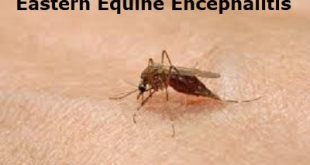Overview of Egg Allergy Egg allergy is a medical condition characterized by an abnormal immune response to proteins found in eggs, most commonly the proteins in egg whites. When someone with an egg allergy consumes eggs or foods containing eggs, their immune system identifies these proteins as harmful invaders and …
Read More »Hearing Loss – Degrees, Risk Factors and Prevention
Definition Hearing loss, or hearing impairment, is the partial or total inability to hear sounds in one or both ears. It can range from mild to profound and can be caused by factors such as age, exposure to loud noises, genetic conditions, illnesses and infections, ototoxic medications, or trauma. It …
Read More »Eastern Equine Encephalitis – Symptoms and Diagnosis
What is Eastern Equine Encephalitis? Eastern Equine Encephalitis (EEE) is a viral illness that can cause inflammation of the brain. Certain birds are reservoirs for this virus; mosquitoes that feed on these birds can carry the virus to people and other animals. Similar to West Nile Virus and St. Louis Encephalitis, …
Read More »End-Stage Renal Disease – Symptoms, Causes and Treatment
Overview End-stage renal disease, also called end-stage kidney disease or kidney failure, occurs when chronic kidney disease — the gradual loss of kidney function — reaches an advanced state. In end-stage renal disease, your kidneys no longer work as they should to meet your body’s needs. Your kidneys filter wastes …
Read More »Exotropia – Symptoms, Management, and Prevention
What is Exotropia? Exotropia is a type of strabismus (eye misalignment), where one eye turns, or deviates, outward (away from the nose). The deviation may be constant or intermittent, and the deviating eye may always be one eye or may alternate between the two eyes. The deviation or eye turn …
Read More »Endophthalmitis – Classification, Symptoms, and Prevention
Definition Endophthalmitis is an inflammatory process of the inner layers of the eye, which may be either infectious or sterile. Infectious endophthalmitis can lead to irreversible vision loss if not treated quickly. Based on the entry mode of the infectious source, endophthalmitis is divided into endogenous and exogenous types. Exogenous …
Read More »Ehrlichiosis – Causes, Symptoms, and Prevention
What is Ehrlichiosis? Ehrlichiosis is an illness caused by the bacteria Ehrlichia chaffeensis, E. ewingii or E. muris eauclairensis. You can get ehrlichiosis through the bite of infected ticks, including the lone star tick and the blacklegged tick. Symptoms can start out mild and flu-like, but if not treated quickly, …
Read More »Enterovirus – Description, Complications, and Prevention
Description Enterovirus (EN-tuh-ro-vy-rus) is a term for viruses that live in the human digestive tract and cause a range of different symptoms, from mild to serious. Most cases do not cause serious harm and go away in just a few days. There are many kinds of enteroviruses, including coxsackieviruses, echoviruses, …
Read More » Diseases Treatments Dictionary This is complete solution to read all diseases treatments Which covers Prevention, Causes, Symptoms, Medical Terms, Drugs, Prescription, Natural Remedies with cures and Treatments. Most of the common diseases were listed in names, split with categories.
Diseases Treatments Dictionary This is complete solution to read all diseases treatments Which covers Prevention, Causes, Symptoms, Medical Terms, Drugs, Prescription, Natural Remedies with cures and Treatments. Most of the common diseases were listed in names, split with categories.








